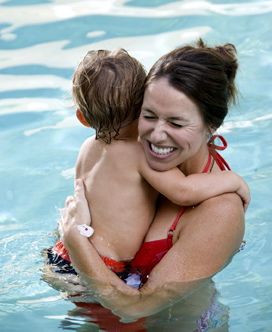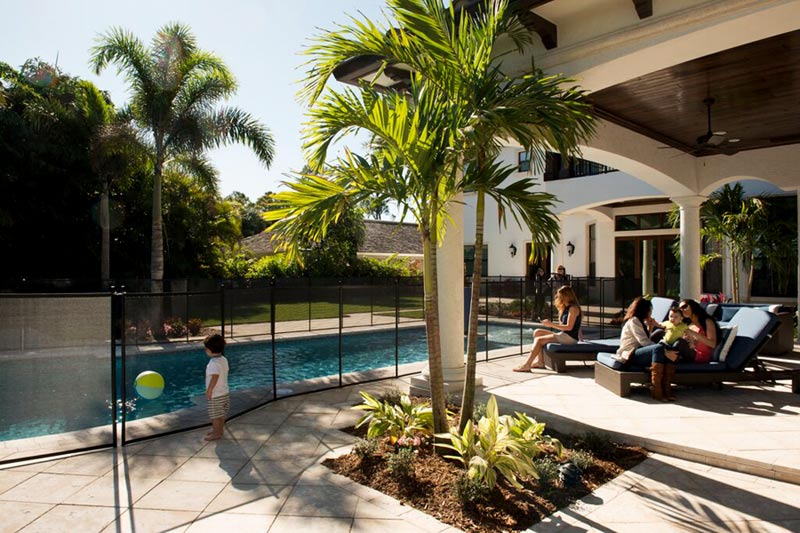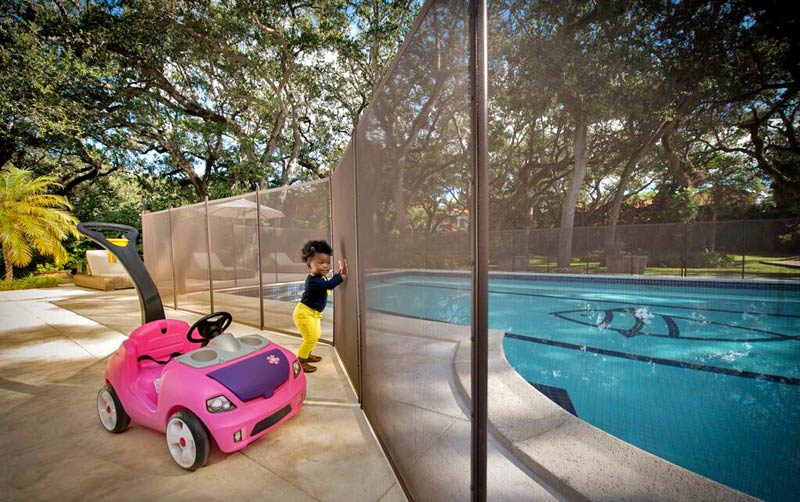Tips to Prevent Drowning Deaths and Keep Your Children Safe
We are in the midst of the summer season and as summer winds down, it can be easy to forget that seemingly safe swimming pools can be a danger to your child’s life. August is the third highest month for drownings and near drownings of children under the age of five, so pool and water safety for toddlers must remain a priority.
How to Recognize Drowning Signs – How to Prevent Drownings
A sad statistic: From 2005-2014 There were an average of 3,536 fatal unintentional drownings (non-boating related) annually in the United States — about ten deaths per day. About one in five people who die from drowning are children 14 and younger, and 75% are under the age of 5!
The Safety experts at Life Saver Pool Fence (Voted “Best Pool Fencing” by parents) put together some great information that can bring awareness and prevent the tragic drowning of children. Life Saver Pool Fence coined the phrase “layers of protection” to help remind parents that 5-safety layers are better than one and just may save a child’s life. Supervision is always the top layer, followed by a strong pool fence with a self-latching gate, door locks placed up high so kids can’t reach them, and more.
1. Assign Water Watchers
When children are in the pool, assign one person as a designated Water Watcher and change shifts every 15 minutes. Active supervision means sitting close to the pool with your full attention on the child/children – no phones or reading materials. Do a regular headcount and step in when there is too much horsing around. If you have to walk away for any reason, another adult must be designated as the Water Watcher.
Do not leave a toddler or young child in the pool area without adult supervision. Older children are not always as sensitive to the dangers of drowning, and my not recognize the warning signs.
2. Parent Supervision
Nearly 300-children under the age of five drown in pools and spas every year. In 69% of those drownings, a parent was responsible for supervising the child. The number one way to prevent drownings is through proactive parent supervision. However, most drownings occur when a child was thought to be in the house but slipped outside without anyone knowing.
In 77% of accidental drownings, the child had been seen 5-minutes or less before being missed and eventually found in the pool. For every child drowning, 11-children manage to survive – but many suffer a disabling brain damage. That is why supervision is the most important layer of protection.
3. High Locks on all Doors and Windows
Install locks high and out of the reach of young children on every door and window that leads to the pool area. Some drownings happen because a parent didn’t know their toddler had figured out the door knob or lock and the simply walked out on their own. Don’t forget sliding glass doors that small children can slide open.
4. Pool Safety Fence
Perhaps one of the most reassuring steps is installing a pool fence. Fences should be at least 4′ tall and have a self-closing, self-latching gate. Mesh pool safety fence, like Life Saver Pool Fence, has proven to be an effective layer of protection with a transparent and aesthetically pleasing look that is easy to remove and reinstall by the homeowner. The best protection is to surround the pool with the fence, so there are no doors or windows leading directly from the home into the pool area.
“You cannot drown-proof a child, but every layer of protection that you add significantly reduces the chance of a child drowning incident– the more, the better. Of those steps, pool safety fencing is arguably the most effective at preventing fatal drowning incidents because it physically prevents access to the pool, making your pool safer for your children and your neighbors,” says Eric Lupton, President of Life Saver Pool Fence.
5. Pool Alarms
Drownings aren’t like in the movies and a child won’t cry for help. They often slip under water without realize what is happening or making a sound. Alarms break that silence. There are many options including simple contact alarms for doors and windows, as well as alarms for pool gates that use an adult bypass switch.
Surface pool alarms will trigger an alarm inside the home when the water’s surface is broken. However, a small child could quietly walk down the steps and slip under water without making a big splash or setting off the alarm.
Subsurface pool alarms detect disturbances beneath the surface. They are less prone to false triggers than floating alarms and more reliable than surface alarms.
6. Child Immersion Alarms
The safest protection you can have for your child is a wearable immersion alarm, like the Safety Turtle, which triggers an alarm inside the house if the sensor gets wet. It resembles a watch and can protect against all water hazards including a neighbor’s pool, ponds, and rivers. It’s also a great option to use when visiting friends, renting a home or on vacation.
7. No doggy doors
Any pet doors that grant access the pool should also be shut. However, toddlers are known to mimic their pets and may follow them right out the doggy door and into the pool area putting them at risk of falling in. If possible, make sure the doggy door does not open to the pool area.
8. Clear out pool area after swimming
Never leave toys or objects in the pool that could attract a child to the water. Children who are in pursuit of a toy won’t think twice about breaking the rules to get it.
Also make sure you move any tables or chairs away from the pool fence so they cannot be used to climb over. Isolate the pool area to be used for swimming only, so children don’t get used to being near the pool when parents are not around.

As soon as a parent and pediatricians feel comfortable, all children should receive swimming lessons. Some organizations even offer training for infants to roll over and float, and to swim to the edge of the pool in case they fall in.
No matter how much instruction your child has, it’s important to give them a refresher if they have not been swimming in a while, like the winter months. That’s true even in warm weather states, like Florida, Arizona, and California where drowning is the number one cause of death for children under five.
10. CPR
Every parent, babysitter, and teenager should also be trained in CPR. This training is essential to get oxygen to the brain and can make the difference between life, permanent disability, and death.
“No matter how hard we try, there are going to be brief moments when we are not looking directly at our children. Someone knocks on the door, the phone rings, your older child runs inside with a bloody nose — life happens. Implementing multiple layers of protection is the best way to make sure that these distractions don’t turn into tragedy,” says Lupton.









